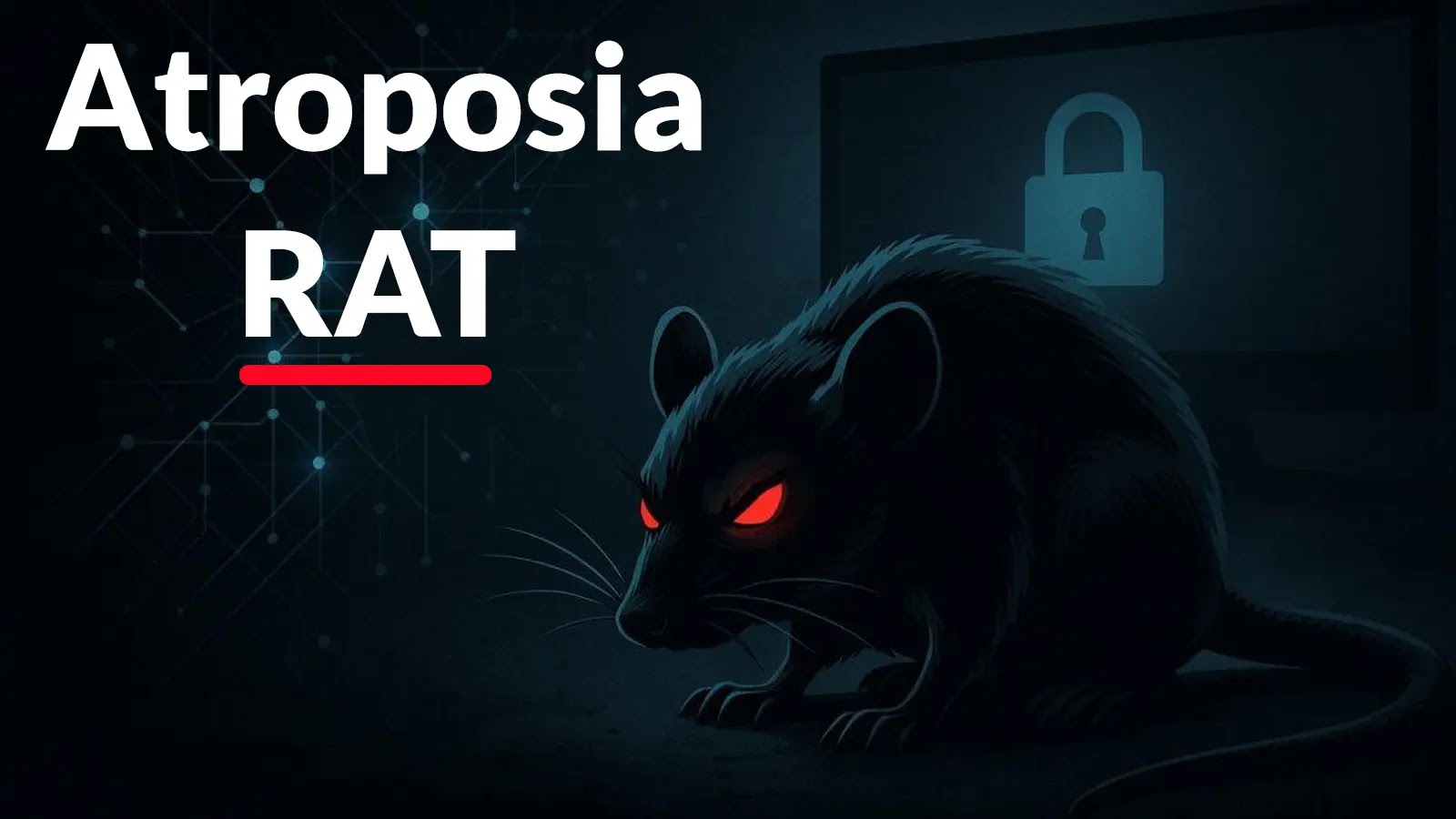
New Atroposia RAT with Stealthy Remote Desktop, Vulnerability Scanner and Persistence Mechanisms
Atroposia RAT: Unpacking the New Turnkey Threat to Cybersecurity
The cybersecurity landscape constantly evolves, with new threats emerging to challenge our defenses. A significant development in this ongoing battle is the rise of Atroposia RAT, a new remote access trojan (RAT) that has quickly garnered attention in the cybercriminal underground. Described as a sophisticated yet accessible toolkit, Atroposia streamlines the process for threat actors of varying technical proficiencies to execute complex attacks. Its modular design and aggressive pricing point make it a dangerous contender, promising to reshape the threat vectors organizations face daily.
What is Atroposia RAT?
Atroposia RAT is a novel remote access trojan designed for stealth and an extensive range of malicious capabilities. Unlike previous iterations of similar malware, Atroposia aims to lower the barrier to entry for cybercriminals. It operates as a “turnkey criminal toolkit,” meaning it packages complex functionalities into an easy-to-use interface, significantly expanding the pool of potential attackers. This accessibility, combined with its powerful features, positions Atroposia as a major threat.
Key Features and Capabilities
The distinct danger of Atroposia lies in its combination of stealth and a comprehensive set of attack features. These include:
- Stealthy Remote Desktop Functionality: Atroposia boasts advanced remote desktop capabilities, allowing attackers to gain covert control over compromised systems. This isn’t just basic remote access; it’s designed to evade detection, making it challenging for security teams to identify and respond to active intrusions.
- Integrated Vulnerability Scanner: A standout feature is the inclusion of a built-in vulnerability scanner. This allows threat actors to not only gain initial access but also to identify further weaknesses within the target network or system, facilitating lateral movement and privilege escalation. This capability turns a simple RAT into a potent reconnaissance and exploitation tool.
- Robust Persistence Mechanisms: Maintaining access to a compromised system is paramount for attackers. Atroposia integrates multiple, sophisticated persistence mechanisms, ensuring that even if initial infections are detected and partially remediated, the RAT can re-establish its presence, often using subtle and difficult-to-remove methods.
- Modular Design: The modular architecture of Atroposia allows threat actors to customize their attack payloads. This means they can select specific functionalities based on their target and objectives, making the RAT more efficient and harder to detect through generic signatures. This adaptability also contributes to its “turnkey” nature, as modules can be easily swapped or updated.
- Aggressive Pricing Model: The source information indicates Atroposia is “priced aggressively.” This financial accessibility makes it attractive to a broader range of cybercriminals, including those with limited budgets, potentially leading to a wider proliferation of this sophisticated threat.
The Impact of Atroposia on the Threat Landscape
The emergence of Atroposia RAT signifies a concerning shift. By streamlining complex attack vectors and integrating advanced tools like vulnerability scanners and stealthy remote access, it democratizes highly sophisticated cyber warfare. The immediate impact includes an increased risk of targeted attacks, data breaches, and system compromises for organizations of all sizes. The ability to identify network weaknesses from within a compromised system significantly shortens the attack chain for adversaries, allowing them to pivot and escalate privileges with greater ease. This new RAT demands heightened vigilance and an adaptive security posture.
Remediation Actions and Proactive Defense
Given the advanced nature of Atroposia RAT, a multi-layered and proactive defense strategy is essential. Organizations must move beyond reactive measures to genuinely anticipate and prevent these sophisticated threats.
- усиление конечных точек:
- Deploy advanced Endpoint Detection and Response (EDR) solutions that leverage behavioral analysis to identify suspicious activities characteristic of RATs rather than relying solely on signature-based detection.
- Implement application whitelisting to prevent unauthorized applications, including unknown RAT components, from executing on endpoints.
- Regularly patch and update all operating systems, software, and firmware to close known vulnerabilities that Atroposia or its integrated scanner might exploit.
- Network Segmentation and Monitoring:
- Segment networks to limit lateral movement if a system becomes compromised. This restricts the RAT’s ability to scan for and exploit vulnerabilities on other connected systems.
- Employ robust network intrusion detection/prevention systems (IDS/IPS) configured to identify command-and-control (C2) communications often associated with RATs, even stealthy ones.
- Monitor network traffic for unusual patterns, outbound connections to unknown IP addresses, or data exfiltration attempts.
- Vulnerability Management Program:
- Maintain a rigorous and routine vulnerability management program. Conduct frequent internal and external vulnerability scans and penetration tests to identify and remediate weaknesses before attackers discover them.
- Prioritize patching critical vulnerabilities. While Atroposia includes a scanner, proactively fixing issues reduces its effectiveness.
- Employee Training and Awareness:
- Educate employees about phishing, social engineering tactics, and the dangers of opening suspicious attachments or clicking malicious links, as these are common initial infection vectors for RATs.
- Emphasize the importance of reporting any unusual system behavior or phishing attempts.
- Incident Response Plan:
- Develop and regularly test a comprehensive incident response plan specifically for malware infections and unauthorized access scenarios.
- Ensure the plan includes steps for containment, eradication, recovery, and post-incident analysis to learn from attacks.
Conclusion
Atroposia RAT represents a significant escalation in the toolkit available to cybercriminals. Its combination of stealth, integrated vulnerability scanning, robust persistence, and user-friendly design makes it a potent threat. Organizations must recognize the gravity of this new malware and respond with enhanced security measures. Proactive patching, advanced endpoint protection, stringent network monitoring, and continuous employee education are not merely best practices but critical necessities to defend against sophisticated threats like Atroposia. Remaining vigilant and adapting defense strategies will be key to mitigating its potential impact.





